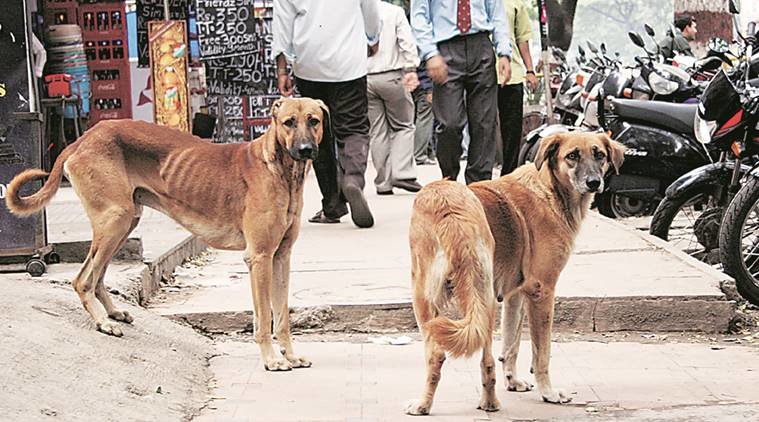Maximum deaths from dog bites were reported in 2013, when 8 people died. In the last five years, residents in Mumbai have suffered instances of at least 457,579 dog bites, with the toll this year touching 58,631 cases until August end. Even as the figures have gone down each year in government dispensaries and hospitals, reportedly cases of dog bites have not fallen, instead patients are moving towards the private sector, where no collective records are available, for anti-rabies injections.
Data accessed by
The Indian Express from the Brihanmumbai Municipal Corporation (BMC) shows that 18 people have died since 2013 from dog bites. Of those, 15 were bitten by a dog outside Mumbai and three within the city limits. In 2013, eight people succumbed to rabies, in 2014 three, in 2015 five and in 2016 two people have died as of August.
This year, Sunita Anantrao Jagtap, 54, was attacked by a dog in Panvel. She succumbed to the rabies infection on August 18 after getting admitted to KEM Hospital in Mumbai. Five days before her death, Madhukar Gade, 55, succumbed to a dog bite. Gade, a resident of Badlapur, was rushed to KEM hospital after there was a delay in getting her access to anti-rabies vaccine. Even as
Kerala battles massive cases of dog bites (over 53,000 recorded this year), with the problem reaching such proportions that gold coins and cash rewards have been offered to those who can cull the stray population, Mumbai has an equally worrying situation.

Stray dogs
The stray dog population, BMC officials estimate, has crossed 1.5 lakh in Mumbai alone. By contrast, the estimated dog population in the entire state of Kerala is 2.5 lakh. The last census in 2014 marked the dog population at 95,714 in Mumbai. Of those, official figure shows, only 69,239 were sterilised and immunised. Sterilisation is the only method used to control their population growth. "Their population rises rapidly and we have only four NGOs working actively to catch, sterilise and immunise these dogs," said Dr Santosh Revankar, who heads the dog cell in BMC.
While the situation in Mumbai is slightly better than Kerala, with dog attacks reported less frequently, the BMC is struggling to contain the quickly escalating population. For 24 wards in Mumbai, there are 12 dog catching vans and only four NGOs involved in Malad, Bandra, Mahalaxmi and Mulund. The eastern and western suburbs are in need of more sterilisation activities as the stray population expands unchecked.
The cases recorded by the BMC of deaths due to dog bites have also been reported in the suburbs. In 2015, a 20-year-old man and six-year-old boy succumbed to dog bites in Bhandup and Kandivli. In 2013, a 55-year-old man died after a dog bit him in Malad on November 29. "It is important to immediately administer an anti-rabies vaccine. It reduces the chances of mortality," said Dr Jayant Khandare, deputy executive health officer at the BMC. The BMC procured 1.53 lakh vials for anti-rabies vaccination of which 1.48 lakh vials were consumed in 2014-2015.
According to Sunish Subramaniam, attached with NGO Plant and Animal Voice, there are only seven sterilisation and immunisation centres across Mumbai under the government and NGOs. "We need to have such centres in each ward," he said, adding that the dearth of centres has also led to overcrowding in each, compromising hygiene and quality. He added that a dog only bites once provoked or when in fear. "The attacks on human population that are in Kerala are not happening here," he said.
So the idiot foreigners are too irresponsible to spay and neuter their animals..
If you're not going to properly care for a pet, don't buy it in the first place!